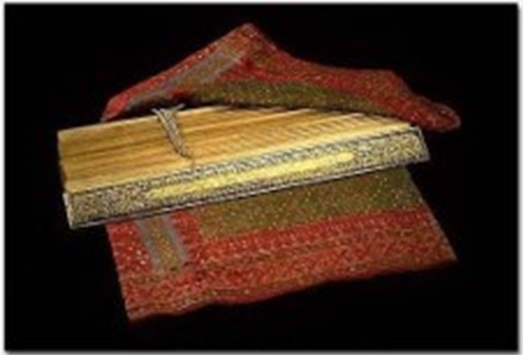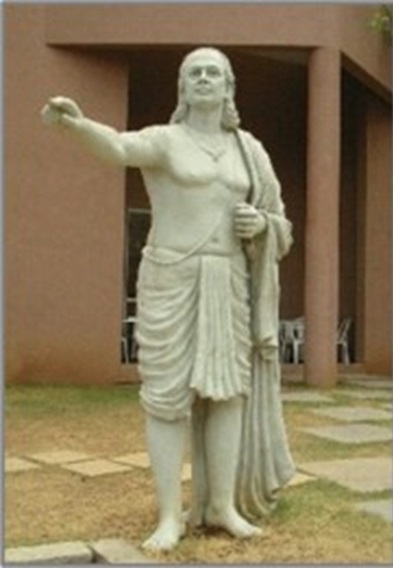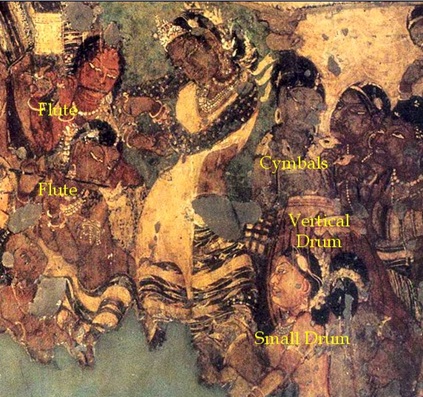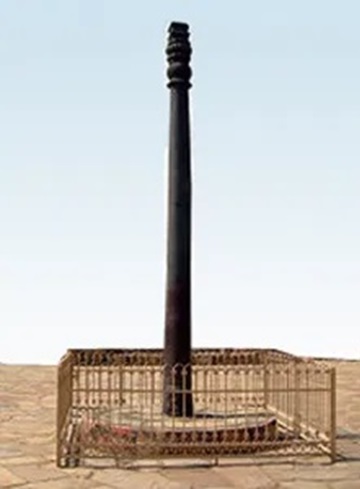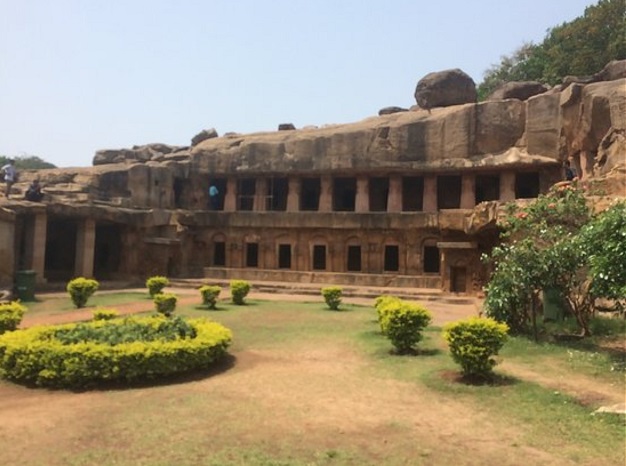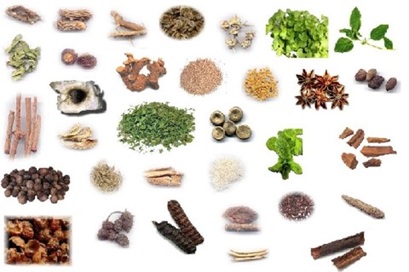India Golden Period (200BCE-500CE) Science and Technology
Science and technology continued to flourish with more analytic tools in mathematics and geometry, and more technological innovations in metallurgy, construction engineering, dyes and textiles. There were sustained efforts in accurate sky observations for astronomical predictions. Various schools of cosmology developed through university work and religious speculations. One of the foremost among these models to be analyzed was the conjecture by Vardhamana Mahavira of the earlier period on the span of the universe. It was proposed that the universe composed of a bounded visible sphere surrounded by an unlimited dark space. By containing the universe, various numerical procedures were formulated to measure the spread and count the number of objects. This led to the arithmetic of large numbers and tools of algebraic manipulations. Various layers of “infinity†were proposed for mathematical closures.
Figure 1. Palm Leaf manuscripts (2nd century CE)
Direct astronomical observations got refined with better time measurement using solar clocks and water clocks. Projection of spherical arcs to linear distance gave rise to the development of sine functions and trigonometric calculations. Theory of residues, theory of fractions and number theory took independent paths of applications development in astronomy. Decimal numbers were formulated, but we don’t see any script for the decimal numerals. The numbers were scribed in coded form taking reference to standard Indian alphabet ordering. The astronomical sciences peaked in the 5th century CE with Aryabhatta who deduced the westward rotation of the earth from the night sky observations.
Figure 2. Aryabhatta, the Astronomer (5th century CE)
Perception sciences developed through the experiments in literature and got formalized in musicology. A perceptive unit called shruti was coded, with twenty-two shrutis covering the seven notes. The melody of the vocal music was ascribed to the shrutis, the acoustic expression of the voice depending on the production of sound. The sentence structure of the music was analyzed for rhythm and tone in order to express emotion. Various string, wind and percussion instruments are referred to in the literature. The logic of aesthetics in music did influence the textiles and the ornamentation for artistic rendition of perceptual beauty. The visual aesthetics is seen in the architectural proportions, use of dyes and pigments in frescoes, and in pottery.
Figure 3. Musical instruments in Ajanta fresco (3rd century CE)
Research of perception led to scientific analysis of mind with the development of yoga as a discipline of study. Cosmological speculation on the asymptotic nature of truth led to various theories of logic and rhetoric. This found its way for analytic examination of human speech and the role of grammar in expressing thoughts. Grammar did play a major role in technological innovations in formulating structured processes, particularly in health sciences. Rigid routines of health and hygiene developed to maintain health and virility. Aesthetics did transfer to human appearance and general living. More detailed material innovations metallurgy and construction followed. A four and half feet circular cylindrical twenty four feet high rust-free iron pillar in Delhi declares the industry of disciplined fabrication.
Figure 4. Rust-free Iron Pillar in Delhi (4th century CE)
Massive caves were cut from the mountains. The Buddhist caves in Ajanta and Ellora were carved for religious sanctuaries and habitation of the monks. The Jaina caves in Khandagiri and Udayagiri were used as royal palaces and theaters. Textile technology advanced and fine silk products were manufactured and were exported. Marine navigation was formalized and the sea traffic was common between India, the Far East and the Arab countries. Metal tools helped develop agriculture technology and irrigation. Metal alloys, gem inlays and ivory crafts developed and much of the products found market worldwide.
Figure 5. Palace caves in Khandagiri (1st century BCE)
Herbal medicine and chemistry of plant extracts were a large part of scientific research. Discovery of forest products and wild herbs for treatment were among the major professions. Empirical knowledge of climate, soil conditions, ground water and elevation were connected to herbs. Domestication was discouraged to claim potency from the natural environments. The flesh and blood of animals were experimented as medicinal products and were prescribed for the treatment of difficult diseases.
Figure 6. Medicinal herbs and spices (4th century CE)
References:
1. The Cultural Heritage of India, Volume VI, Science and Technology, The Ramakrishna Mission Institute of Culture, Calcutta, 1937, reprinted 1986.
2. History of Ancient and Early Medieval India: From the Stone Age to the 12th Century – Upinder Singh, Pearson Education, Delhi, 2009.
3. Carakasaá¹hitÄ (चरकसंहिता) by Charaka – Text with translation – Ram Karan Sharma, Vidya Bhagwan Das, Chowkhamba Sanskrit Series, 2013, Varanasi, India.
4. TattvÄrthasÅ«tra (ततà¥à¤¤à¥à¤µà¤¾à¤°à¥à¤¥à¤¸à¥‚तà¥à¤°) by UmÄsvÄmÄ« - https://archive.org/details/tattvarthbook10webf
6. A Concise History of Science in India – Edited by D.M.Bose, S.N.Sen, B.V. Subbarayappa, Orient Black Swan, 2009.
---------------------------------------------------------------------------------------
Dr. Bijoy Misra serves as the President of India Discovery Center and leads the Science and Technology track in the project on "Evolution of Indian Culture: Pre-history to 1947AD"
More information and updates on the project are available at https://www.facebook.com/Evolution-of-Indian-Culture-An-IDC-Project-107749391111922
More information on India Discovery Center is available at https://www.indiadiscoverycenter.org
(c) Copyright 2021 India Discovery Center, Inc. All rights reserved.

